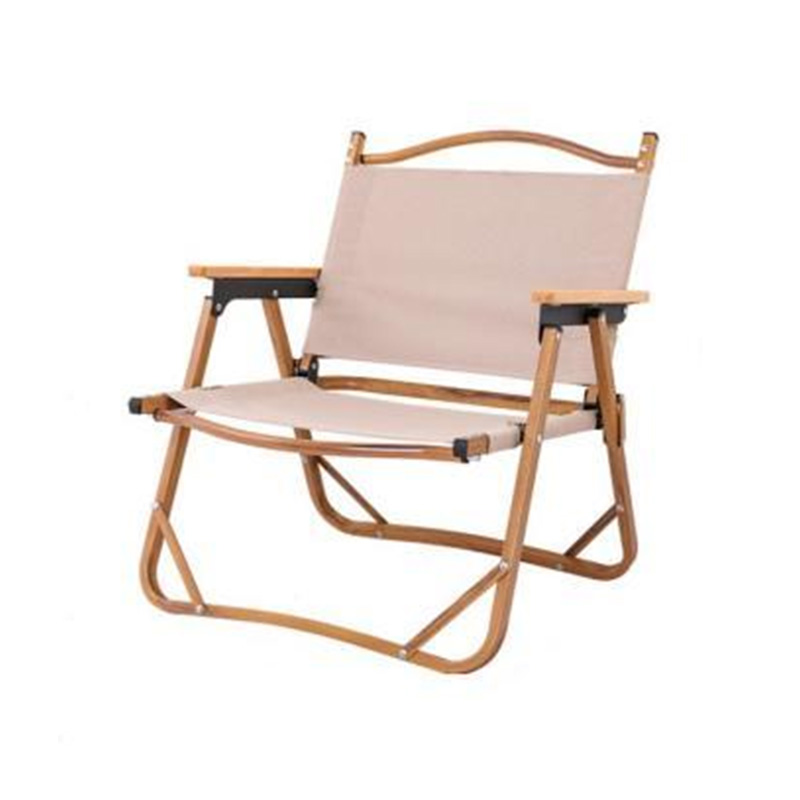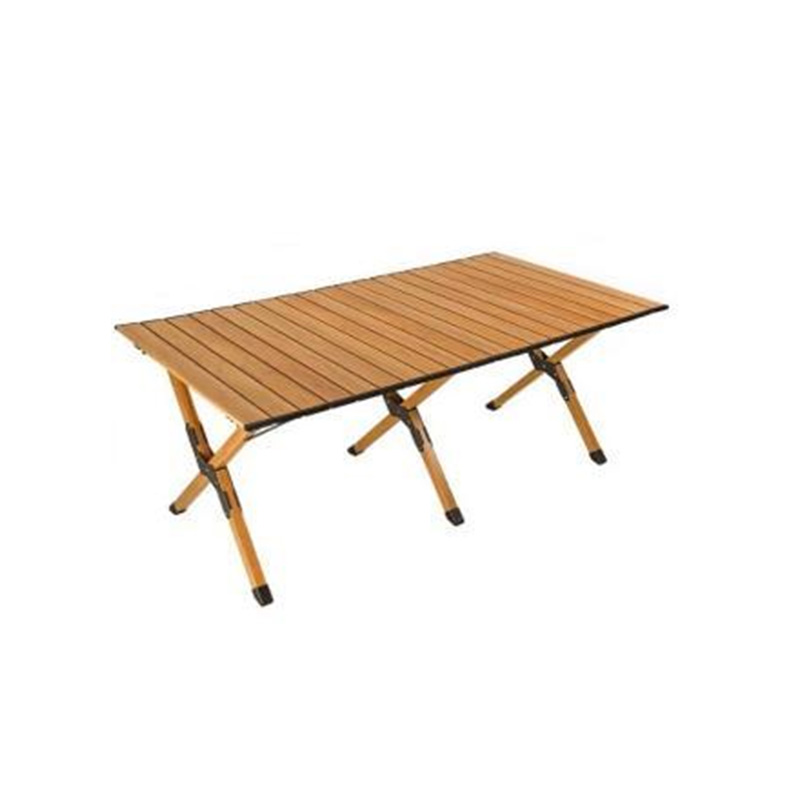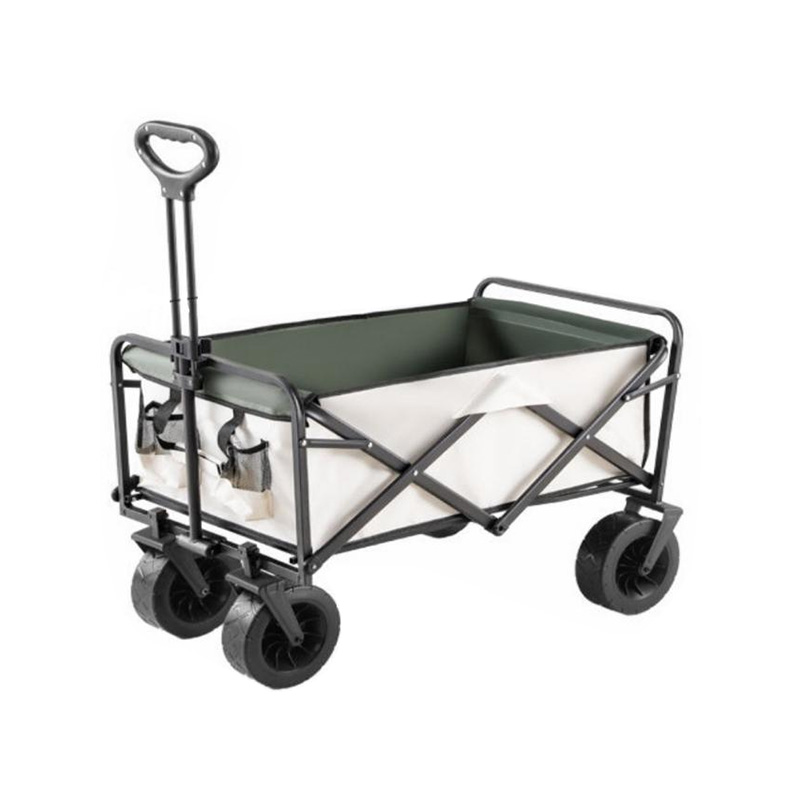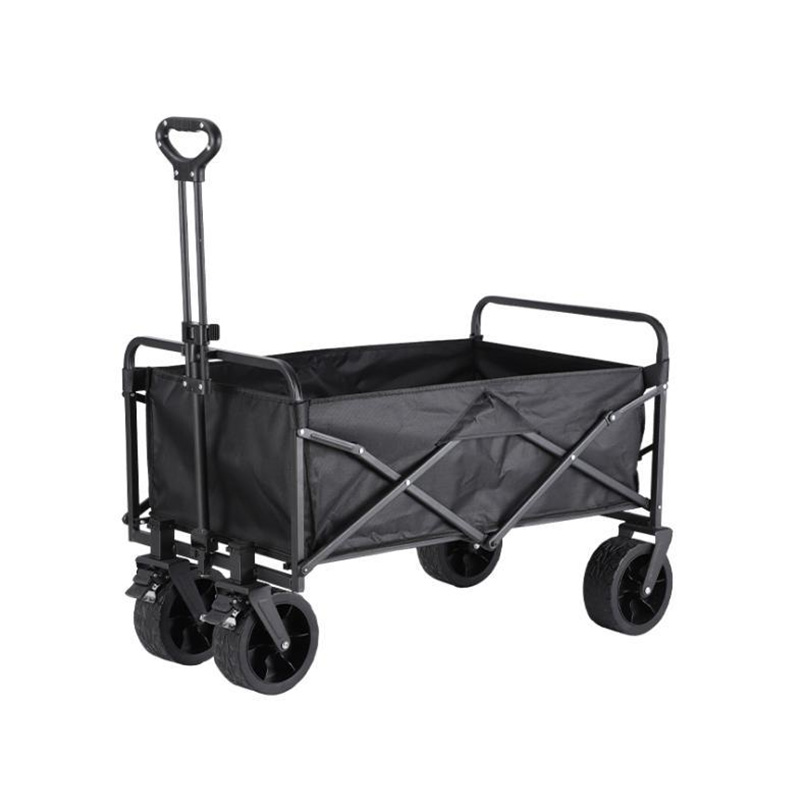What are the application scenarios of camping carts?
Posted by Admin
Camping carts, also known as outdoor utility carts or collapsible wagons, are versatile tools that significantly enhance the camping experience by providing an efficient way to transport gear and equipment. Their practical design and multifunctional capabilities make them indispensable for campers, families, and outdoor enthusiasts.
One of the primary applications of camping carts is carrying camping equipment, especially when vehicles cannot directly access the campsite. This scenario is common in many popular camping locations where trails, steep terrains, or dense forests prevent cars from reaching the camping area.
The ability to load multiple items into a cart not only saves time but also reduces the physical strain of carrying equipment on foot. Many camping carts are designed with sturdy wheels capable of navigating various terrains, including sand, gravel, and uneven ground. This versatility ensures that you can easily transport your gear, no matter the challenges of the environment.
Camping carts are particularly useful for families or groups of friends traveling together. When there are more people, there is often more equipment to carry, including personal items, food supplies, and recreational gear. For families with young children, additional items such as strollers, toys, and extra blankets can quickly add up, creating a logistical challenge when it comes to transportation.
Camping carts provide a solution by allowing you to consolidate multiple items into a single, easily maneuverable load. This capability frees up hands, making it easier for parents to manage children, pets, or other responsibilities. For group trips, carts enable team members to carry shared equipment, such as large tents, cooking supplies, and camping furniture, more efficiently.
Camping often involves numerous tasks, such as setting up tents, and canopies, preparing meals, and organizing the campsite. A camping cart can significantly improve efficiency by serving as a central tool for transporting supplies between different areas of the campsite. By having a dedicated cart for moving items, campers can divide tasks among group members, allowing for a coordinated setup process.
For instance, while some team members work on pitching the tent, others can use the cart to transport firewood, cooking equipment, or other necessities. This division of labor not only speeds up the overall setup time but also helps prevent fatigue, enabling campers to focus on enjoying their outdoor experience rather than expending unnecessary effort on logistics. Moreover, the ease of moving heavy items with a cart reduces the risk of injury, particularly when handling awkward or bulky objects.
The versatility of camping carts extends beyond their primary function of transporting gear. With a little creativity, camping carts can be adapted for a range of additional uses, making them a multifunctional asset in any outdoor setting.
For example, with the addition of a sturdy surface, a camping cart can be converted into a portable table for dining, playing games, or preparing food. This feature is particularly useful when camping in areas without picnic tables or other flat surfaces. Some models even come equipped with cup holders or mesh pockets, further enhancing their utility as makeshift tables or storage spaces.
Camping carts can also serve as baby picnic carts, providing a safe and convenient spot for children to sit, eat, or rest. This function is particularly beneficial for families with young children, as it creates a designated space for kids that is both accessible and easy to monitor. Additionally, camping carts can be used to carry beach gear, fishing supplies, or gardening tools, demonstrating their adaptability for various outdoor activities beyond camping.





